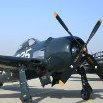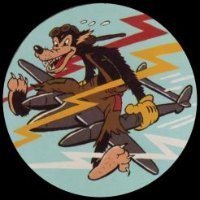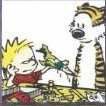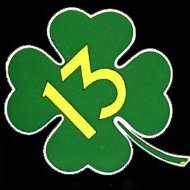-
Posts
3,873 -
Joined
-
Last visited
-
Days Won
2
D Bellis last won the day on May 28 2015
D Bellis had the most liked content!
Profile Information
-
Gender
Male
-
Location
SE CT, USA
-
Interests
Way too many to list here!
-
 D Bellis reacted to a post in a topic:
LEMKits Kawasaki KI-78 Ken
D Bellis reacted to a post in a topic:
LEMKits Kawasaki KI-78 Ken
-
 D Bellis reacted to a post in a topic:
Familiar person guesting on the ‘Beyond The Box Art’ podcast!
D Bellis reacted to a post in a topic:
Familiar person guesting on the ‘Beyond The Box Art’ podcast!
-
 D Bellis reacted to a post in a topic:
Familiar person guesting on the ‘Beyond The Box Art’ podcast!
D Bellis reacted to a post in a topic:
Familiar person guesting on the ‘Beyond The Box Art’ podcast!
-
 D Bellis reacted to a post in a topic:
Familiar person guesting on the ‘Beyond The Box Art’ podcast!
D Bellis reacted to a post in a topic:
Familiar person guesting on the ‘Beyond The Box Art’ podcast!
-
 D Bellis reacted to a post in a topic:
Familiar person guesting on the ‘Beyond The Box Art’ podcast!
D Bellis reacted to a post in a topic:
Familiar person guesting on the ‘Beyond The Box Art’ podcast!
-
Interesting. That problem might not be on Google's end. I'm on an up-to-date PC browsing with the latest Edge, and both Chinese (Traditional) and Chinese (Simplified) are options within Google's auto-translate function. The Bronco en site does come up as "Malicious" with a McAfee warning, and 'continuing anyway' results in a "403 Forbidden" error. However, the straight link (non-en) merely results in an outdated security certificate warning: http://www.cn-bronco.com/ From their Contact Page: Address: Building D, No. 688, Lingfeng Mountain Road, Beilun District, Ningbo City Contact: Miss Li Tel: +86(574)86819000 Fax: +86(574)86996507 E-mail: bronco@vip.163.com HTH, D
-
 KiwiZac reacted to a post in a topic:
Laminar Flow Design - New Fw190D-11/D-13 Conversion?
KiwiZac reacted to a post in a topic:
Laminar Flow Design - New Fw190D-11/D-13 Conversion?
-
Great recovery! Well done. I've had Zotz decals break up like that while applying them, and also had them crack & peel many months/years after apparently applying them on the model successfully, too. The solution? No more Zotz decals for me. D
-
 D Bellis reacted to a post in a topic:
F-8C Crusader - HOT ROD FLAMES!!!
D Bellis reacted to a post in a topic:
F-8C Crusader - HOT ROD FLAMES!!!
-
 D Bellis reacted to a post in a topic:
F-8C Crusader - HOT ROD FLAMES!!!
D Bellis reacted to a post in a topic:
F-8C Crusader - HOT ROD FLAMES!!!
-
 D Bellis reacted to a post in a topic:
1/32 Hasegawa Grumman Hellcat F6F-3
D Bellis reacted to a post in a topic:
1/32 Hasegawa Grumman Hellcat F6F-3
-
The above is not very effective out of context:
-
 LSP_K2 reacted to a post in a topic:
Takom Wings 1/32 Ho 229A & B
LSP_K2 reacted to a post in a topic:
Takom Wings 1/32 Ho 229A & B
-
 LSP_K2 reacted to a post in a topic:
Takom Wings 1/32 Ho 229A & B
LSP_K2 reacted to a post in a topic:
Takom Wings 1/32 Ho 229A & B
-
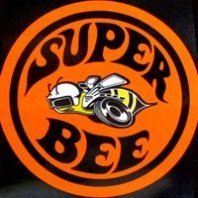
Does anyone else sneeze when they sit down to their bench?
D Bellis replied to Gazzas's topic in General Discussion
Different labels for the same product. D -
 LSP_K2 reacted to a post in a topic:
Me 163B Komet, skid extended?
LSP_K2 reacted to a post in a topic:
Me 163B Komet, skid extended?
-
 Martinnfb reacted to a post in a topic:
Operation Rising Lion
Martinnfb reacted to a post in a topic:
Operation Rising Lion
-
 CRAZY IVAN5 reacted to a post in a topic:
Operation Rising Lion
CRAZY IVAN5 reacted to a post in a topic:
Operation Rising Lion
-
Seems like a risky way to check Pitot Heat... D
-
The inside of the Hellcat's fuselage and cowl were a light gray known as "Grumman Gray". Only the cockpit itself was Interior Green. Some period color shots of the Grumman Gray: Even with the later Gloss Sea Blue scheme, the Grumman Gray could be seen through the small windows of early F6F-5s: HTH, D
-
This has been an LSP problem since the server migration back in February. No other sites. Just this one. All since the server migration. Coincidence? I guess what we really need are more members from a little island off the coast of Europe to chime in that they're too slow already to have noticed any slowness with this site. That's sure to help. D
-

Laminar Flow Design - New Fw190D-11/D-13 Conversion?
D Bellis replied to Thunnus's topic in LSP Discussion
Um, no. The Hasegawa Fw 190D-9 currently on the market (ST19 or 08069) was first released in 2003 as a newly tooled kit. While not containing the 400+ parts of the Tamiya 1/32 P-51D, it is a reasonably accurate, very nice kit that's typically found in the $40 - $50 range. Hobby2000 also released it with extras in that same price range. HTH, D -
You stated your initial question as though there were Eduard boxings other than their "Pin Up" boxing. To answer your actual question: HTH, D
-
Is there another Eduard boxing? (Other than "overtrees", which theoretically contains the same parts and only the parts.) D
-
The parts in that kit can be built as any short-tail P-40E, long-tail P-40K, or long-tail P-40M. The Eduard kit has the basic parts for any long-tail P-40K, M or N. Mine also has the early windscreen and short tail parts for an E as well, but apparently this is not standard in every Eduard P-40N kit. Maybe. Depends on whether or not you use the early canopy parts along with that short tail. No P-40s with the N-only canopy had a short tail. HTH, D
-
Maybe that's why they rotted so quickly? In all seriousness, I've read that weep holes were first drilled in Mosquitos serving in tropical places such as Hong Kong, Singapore and India. These can be seen in photos taken post-war (look along the wing side of the aileron hinge line). But the ever-present condensate moisture swelled the drilled holes shut rendering them useless. So, holes were burned through, which supposedly worked to prevent them from swelling shut, but it was too late for most of the rotting airframes by the time they figured out the solution. D
-
Correct. Wood rots if not allowed to "breathe". Same for fabric-covered structures. Today, those vents are known as "weep holes". Photos of those holes on an La-5? Well, good luck with that. D
-
https://www.ebay.com/itm/176928490119 D
-
Well, there's this: "Dana Bell post on HS 4-30-20: What I do have a is a handful of delivery projections and Grumman drawing 23350 (a digest compiling general color scheme information collected from eight more-detailed drawings). I would have liked to have the additional information from those drawings, but I never found copies. The drawings show schemes worn by aircraft as they left the factory, schemes that were frequently obsolete as the aircraft reached the Fleet. In many cases the aircraft were repainted at Norfolk or San Diego; others were repainted by their units. Here’s what shows up: F4F-3 - 1844-1896 (53) - Bright aluminum scheme, yellow wings, colorful unit markings. F4F-3 - 2512-2538 (27) - Overall dull aluminum camouflage (aluminized lacquer dulled with corn starch). This scheme still used four 50-inch wing insignia with no fuselage insignia. Although the colorful unit markings were not to be carried, Grumman had already painted the tail subassemblies for Wasp (black) and Ranger (green) before the aircraft were camouflaged. The Navy gave a waver, and the aircraft were delivered as seen in the color photo. F4F-3 - 3856-3874 (19) - Overall Light Gray camouflage (replaced dull aluminum camouflage). 50-inch national insignia above left wing and below right wing, 20-inch fuselage star. F4F-3A - 3875-3969 (95) - Same camouflage scheme as previous F4F-3 - 3970-4057 (88) - Same camouflage scheme as previous F4F-4 - 4058-4098 (41) - Same camouflage scheme as previous; expected to be delivered by 22 Aug 1941 F4F-4 - 5030-5262 (233) - Beginning of Blue Gray/Light Gray scheme. Four 50-inch wing insignia, two 50-inch fuselage insignia, red/white rudder stripes. Deliveries were expected to begin in September 1941, though those unit markings weren’t introduced until Christmas 1941 - calling the reported markings into question. F4F-7 - 5263-5283 (21) - Same camouflage scheme as previous for first two aircraft. 5265 and subsequent delivered without rudder stripes or insignia red centers. F4F-4 - 01991-02152 (162) - Same camouflage scheme, without rudder stripes or red centers. Again, most of these colors and markings would change in service, and I wish I had more reliable information to work from. Hope this helps..." And this: HTH, D


